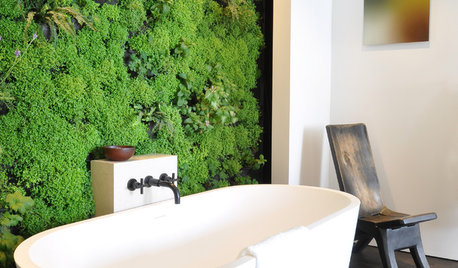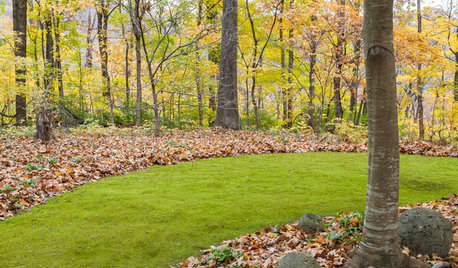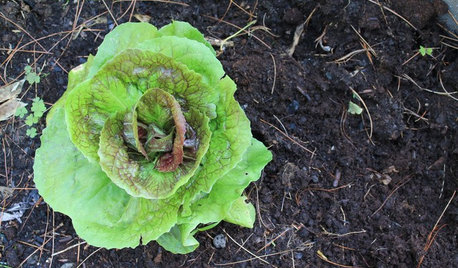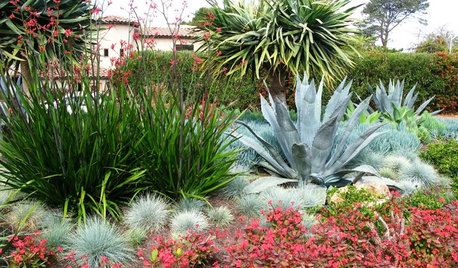Moss FAQs: Moss on Soil and Other Surfaces
Moss doesnt really put roots into the soil or surface underneath it so much as anchor itself to the soil or surface using a rudimentary structure called a rhizoid. Moss can grow on trees, rocks, soil, sand, roofs, old gym shoes, foam rubber, old rugs etc. but moss cannot grow or attach itself to a smooth surface because there is nothing to grip.Once I found Brachythecium salebrosum , a nice very thick carpeter creeping moss, growing on a smooth red clay brick in a dry stream bed. The frequent rains kept the salebrosum well hydrated and the moss hanging off the brick on the upstream side was positioned to brace itself against the rushing waters. Thinking that this moss had adhered to the brick, I lifted the brick and moss together and then carefully examining the moss found that it was not adhering or attaching to the brick at all, but instead just laying on the brick.
Except when you are growing moss in containers you generally will want to use a soil or other surface that moss can grip.
Moss on soil and soil pH.
pH is a measure of how acidic or alkaline a soil is. 99% of the time, just assume that the moss you see or want is a moss that likes acidic soil because the greater majority of mosses like an acidic environment. If you see moss attached to limestone or clay then that moss likes alkaline soil, otherwise just assume moss likes an acidic environment.
If you donÂt know whether your soil is acidic or alkaline then ask your county extension office or any landscape nursery. If you do not have acidic soil and wish to make your soil acidic then add sulfur powder sometimes called soil sulfur which is sold at nurseries and landscape and garden centers. George Schenk in his book Moss Gardening recommends applying about 2 ½ pounds of powdered sulfur per one hundred square feet. He recommends a pH of 5.5 which is quite acidic. Buy a cheap soil test kit and learn how to use it. I like the kind of test kit that you put a little soil in a plastic vial, add a capsule of test powder and fill to the recommended level with distilled water. You then compare the color of the soil solution with a chart to determine the pH of your soil.
Moss hugs the soil. Moss needs close contact with the soil or whatever surface is underneath it. Since moss cannot retain water, except a small amount within its cell leaves, moss does best when it can wick the moisture when needed from the surface or substrate beneath it. If moss is not in close contact with the soil then the small pockets of air dry out the moss and cellular activity is suspended when moss is dry.
Kinds of soil: Black, brown, clay or sandy
Black, brown, or clay should be treated as above for pH. Clay particularly has a tendency to be alkaline. For clay if you want to grow mosses that are not normally found on clay then the pH must be adjusted. Clay doesnÂt drain well so if mosses are growing on it the water stays on the surface longer and the mosses stay hydrated longer. Compacted soils of all types is where mosses do very well because compacted soils drain poorly.
Do not use potting soil unless you plan on watering frequently. Bonsai which do have fast draining soils are watered daily and in hot weather even twice daily. So bonsai moss get watered very frequently.
Sandy soil a lot of times in northern climates is acidic because sandy soils are glacial sand deposits. These glacial sand deposits contain large amounts of granite sand particles which are mildly acidic. So Maine, Washington, Michigan, Wisconsin, northern Ohio et al, those states seem to be mostly glacial sand deposits. Other parts of the country like the middle of Illinois for example has little surface sand so one would think you could go out and buy a bag of builders sand and use it to grow moss. Probably wonÂt work for acidic moss. Sand from the garden shops and home centers may be excavated sand and excavated sand is usually alkaline. Can you adjust the pH of alkaline sand? Yes and no. Yes you can adjust it but sand is just miniature rocks which will need periodic testing and adjusting. Alkaline rocks like limestone are never going to accept being changed to acidic. ItÂs like trying to change a lion into a house cat. Not going to happen.
Those states that have glacial sand deposits also get a lot of rain. Lots of rain. Sand drains quickly and that can be a good thing if you get a lot of rain. If you are trying to use excavated sand and your yard is not in a northern tier state or get excessive rainfall then your alkaline sand will also leave your moss dehydrated most of the time. Now moss can live and grow in the desert but the moss you are trying to grow on excavated sand probably didnÂt come from the desert and doesnÂt like your alkaline dry sand either.
You might think that mixing some peat moss in with the sand to add water retention and increase the acidity would seem to be a great solution. Unfortunately peat moss mixed with sand is an unstable combination. The peat usually deteriorates or blows away and the sand never retains any of the peatÂs acidic qualities.
Builder or garden center sand can be used to grow acidic moss on it if you add a lot of peat and minimize the drainage, or ÂÂ. just grow your moss on peat.
Note: beach sand from the ocean contains salt and thus cannot be used for growing moss.
Peat moss as a soil. Both Schenk and Fletcher mention growing moss directly on blocks of peat moss. Peat moss is acidic and does retain water but will give up the water to growing plants as they need more water. Schenk has several pictures of great looking mosses growing on blocks of peat. Peat moss is a good idea for a soil for small areas.
Water Crystals
For some mosses periodic wet and dry cycles may be important in the moss life cycle but if you want to propagate your moss or just have it display well then keeping the moss hydrated is important. Since rains and mists may not be every day then water retention may allow moss to wick moisture as needed. Some soils accomplish this is in different ways. I mentioned clay above but clay is also alkaline so it has pH issues.
We have mentioned how peat moss can retain water. Another soil amendment that also retains water is the water crystal(s). About thirty six years ago I listened to a presentation in Peoria by a scientist from the USDA Research Lab about a starch based water retention crystal. He said the crystals had only a few uses they knew of at the time but eventually they expected many more ideas would pop up. As time passed the crystals showed up in diapers now they are in the potting soil. Both Schenk and mossacres .com recommend using water crystals mixed in with your soil. Three years ago I found on the web a bulk source for Hortasorb which is one brand of water retention crystals. I think I paid twelve bucks for two pounds. The crystals each retain water equal to anywhere from thirty to one hundred times their dry weight and then release the water as needed. For any moss garden from the size of a clay saucer up to two hundred square feet I would recommend using water crystals. Do you have to have water crystals? No but if your moss would do better by being hydrated for longer periods of time then the water crystals are a good idea. The crystals can be bought at many garden centers.
Other surfaces: Sandstone, granite, concrete and synthetic
Sandstone and granite are mildly acidic rocks. Sandstone may have varying amounts of clay in it but generally when the rock appears to be reddish or sandy in color and have lots of sand particles then it is acidic.
Fresh concrete is alkaline and must be treated with a wash of vinegar which is acetic acid or wait a few months. Moss in the wild grows slowly on rocks and concrete and is difficult to transplant. Except for some moss growing on sandstone let me say it is impossible to transplant moss from those surfaces. You end up with small amounts of moss scraped off the surface and to move that moss you harvested to another rock you have to glue it and hope that it will receive enough moisture on its new rock. Transplanting moss from rock to rock is a tricky business. Better to start from scratch and take the bits of moss and make a slurry and spread that moss mix on the new rock. Moss slurries will be covered in Moss Propagation FAQ.
Can you take moss from the soil and plant it on a rock? Schenk says never. Fletcher doesnÂt say. Lets assume the moss on the ground can also grow on rocks and that is usually not the case. If the moss is mature in size for its species then it is used to receiving regular moisture that it needs. You put that moss on a rock and it must be glued tight to the rock so there are no air gaps. Glue probably inhibits any water wicking so if you stand the rock in a saucer of water, a favorite trick of SchenkÂs, then it is difficult for the moss to wick water across the glue joint. Better to use moss slurries on rocks and concrete and that is covered in moss propagation.
Synthetic surfaces
Moss can grow on surfaces like shingle roofs, foam rubber, old rugs, tennis shoes. The moss anchors itself to these surfaces and then just grows. Some mosses donÂt grow on soil, Grimmia for example, and only grow on rock.
Moss on trees and logs
Moss growing on logs and trees. You can try transferring these mosses to soil but depending on the species it may or may not work. Usually moss growing on wood likes wood.
There are some mosses that are ubiquitous; they grow on anything. Like the genus Brachythecium which seems to grow everywhere. Mossacres.com has the moss of the genus Dicranum another common moss which they refer to as rock cap moss and they grow it on rock and say it can grow on soil.
Decomposed granite and chicken grit.
Nurseries and garden centers carry a granite sand called decomposed granite which is mildly acidic or neutral. Decomposed granite is used for walkways and is an excellent surface for growing moss. Chicken grit is usually another granite sand.
Netting, landscape ground cloths and frost cloths.
Netting is used to keep the birds and squirrels from wreaking havoc with your moss. In the springtime birds take moss for nesting material. The rest of the year, birds like to toss moss looking for critters underneath. Ground and tree squirrels may bury nuts in the fall. I buy a fine cheap fabric netting from Walmart that is found in the fabric/sewing section. I call it taffeta. It is black and almost invisible. The netting "squares" are about one quarter inch. The netting is invisible from eyelevel. Netting also makes it easier to remove leaves in the fall from your moss garden. Nothing can protect moss from pine needles. That is why in nature moss finds it almost impossible to grow under pine trees.
Small moss gardens should have landscape fabric about one inch under the topsoil. Landscape ground cloths keep vascular plants if the start growing in your moss garden from putting down deep roots and they keep any germinating seeds from below the ground cloth from growing to the surface.
Frost cloths are white spun cloth that are used to keep regular vegetable garden plants from freezing in the early spring and late fall. Frost cloths extend the growing season for garden plants. In the moss garden use frost cloths as a light cover to increase the humidity in a moss garden during hot weather if I want to keep that moss growing rapidly. Frost cloths should be loosely floating above the moss and should not be left on for more that a few days at a time.
Rick













joanmarie_m_gmail_com
terrestrial_man
Related Discussions
Peat Moss and Top Soil?
Q
Moss on bed, and poor growth
Q
Moss FAQs
Q
How fast does moss grow on rock like surfaces?
Q
greenlarry
ponderinstuff
jmcat
yishuanchen
jessica.budke
slumett_gmail_com
cclutchey